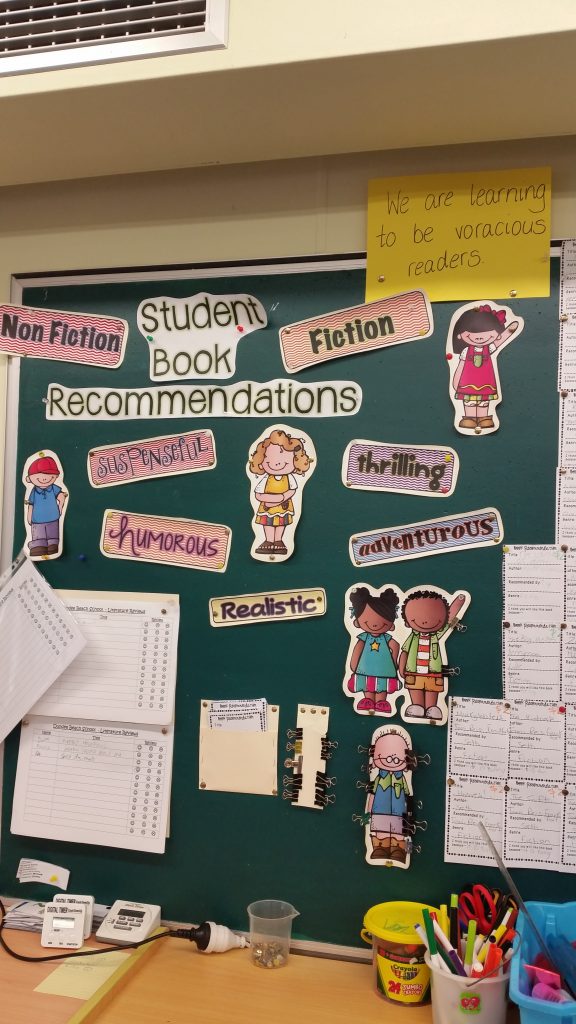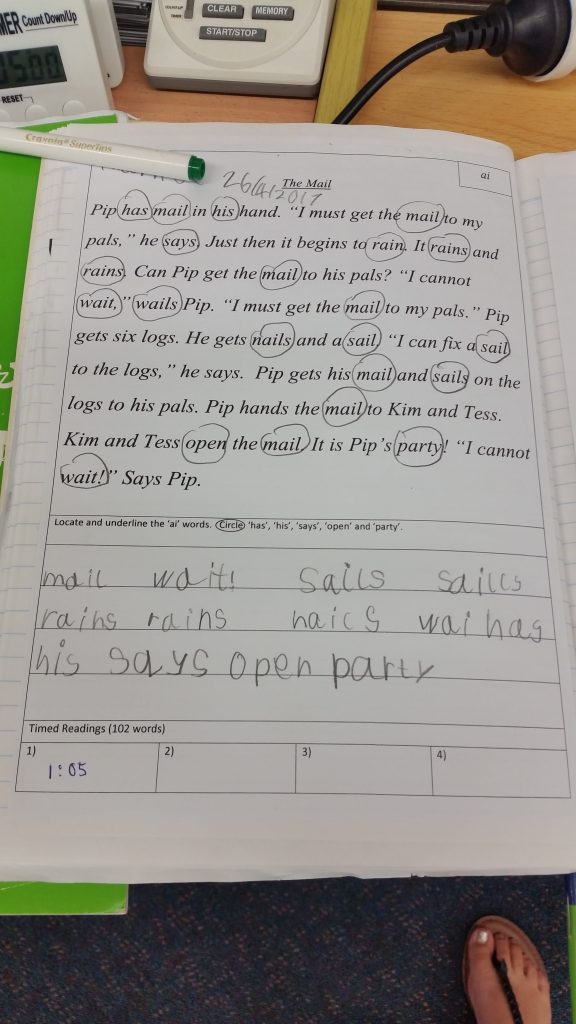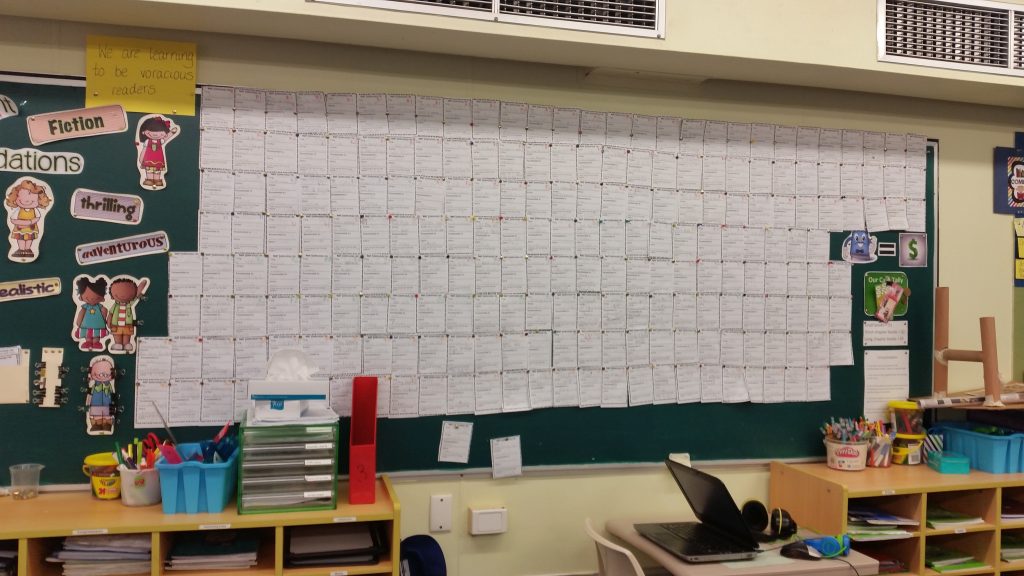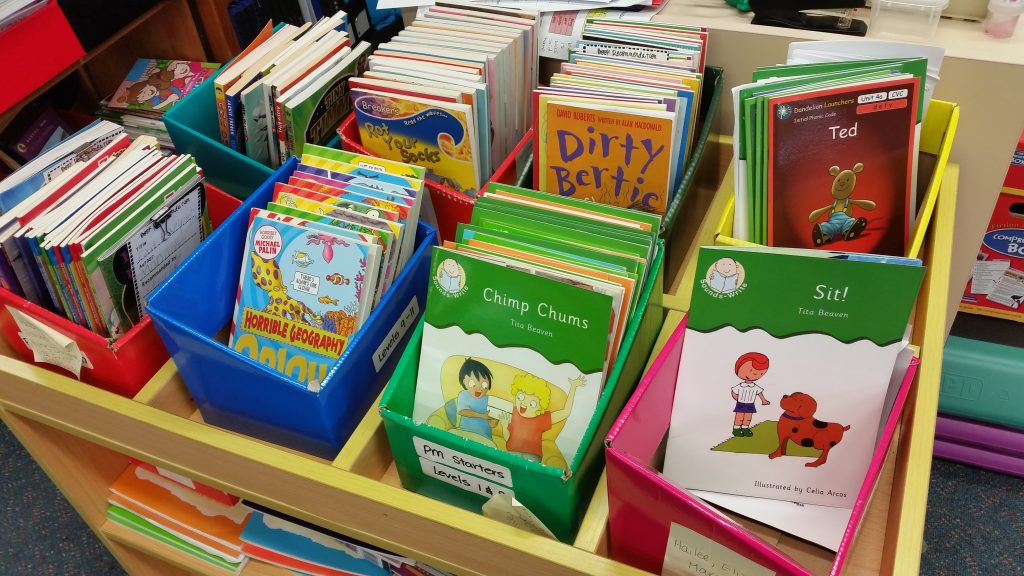Books have always been a part of my life. Growing up, our house contained bookshelves bursting at the seams with volumes. A wide range of topics were represented; the classics, light romance novels, encyclopaedias, books about Buddhism, Christianity, philosophy, pottery, home improvement, self-improvement, the complete works of William Shakespeare and of course, the Readers Digest condensed books that arrived regularly in the mail. My Mother was an enlightened woman who, acutely aware of her own lack of education (despite being Dux of the School she was not permitted to stay at school because she was a girl) was determined that her children would be able to converse on a variety of topics. We watched documentaries, talked about world affairs, had deep and meaningful conversations about the meaning of life and throughout my childhood, a word of the week had to be used in a meaningful sentence a couple of times a week. Little did she know then that she was ahead of her time. It was my mother who taught me about ‘sounds’ and sounding out, expanded my vocabulary, ensured that I understood what I was reading and made me a voracious reader. I am so very grateful.
My first encounter with teaching phonics was in 2005 where I volunteered at an independent school in the NSW Hunter Valley. The school had 27 students and was staffed by a principal and teachers whose conviction in the difference we can make the kids was palpable. I recall one teacher angrily declaring, “You never write kids off!” after hearing about their experiences at a previous school. There was a common purpose and passion and enrolments quickly grew. This school was using a grapheme to phoneme program called LEM which taught students ‘phonograms’ where several phonemes were attached to a grapheme, digraph or trigraph. Children would learn the grapheme ‘a’ and say “fat baby in the bath all washed” learning the associated phonemes. This school was where I first became aware of spelling rules and the logic of words. I realised at this point that reading and spelling was something that I had always just ‘done’, but not understood. At about the same time I was seeking a more meaningful base for my study. I was appalled at how soulless and mechanical the teaching felt in my mainstream university.
I felt a call to action and began to tutor struggling students. I reasoned that even with my limited knowledge I couldn’t do any worse for these children than the school system had already done. My first student was a little boy in year 2 who had been diagnosed with Dyslexia. His previous teacher saw no reason to give him a spelling book, so he played during spelling lessons instead. The psychologist who diagnosed him told his parents that they would need to think carefully about the jobs that their son would be able to do when he grew up. He was withdrawn, sad and disengaged. It made me furious. I tutored this little boy for free for the whole Christmas holidays. With encouragement, a focus on phonics and the effort to make reading fun he went from a little boy throwing his book across the room to one hounding his mother to read another book with him. Once back in the classroom however, this all reversed and he was back in a world of struggle.
In 2006 I found myself at an Independent faith-based tertiary college in New South Wales and the lecturers there helped to fan the flames of my passion for teaching. They were connected with schools, still taught, mentored teachers and above all, were highly dedicated and passionate about their profession. I remember one lecturer talking to us about her time teaching in the 80’s and how she had been instructed not to teach phonics. She told us that she wrote a whole language program and then taught phonics anyway. She talked to us about the very real responsibility that we had as teachers to set our students up for success. Part of her regular lecturing program was to bring in the parent of an ex struggling student to address the preservice teachers. She made her students see their responsibility through the eyes of a parent whose child had been so very let down by the school system. From this woman I learned a defiance and steadfastness that stays with me to this day.
I continued to tutor throughout my teaching study and, other than that one year (I had a second baby and had to move to a distance program), I recall no teaching about phonics or the evidence around reading instruction. At my busiest, I worked with 30 students each week from home. Places were tight and I had to start a waiting list. I worked with students ranging from 6 to 14 years old. For those who I saw for reading there was a common theme. They knew ‘single sounds’, a few consonant digraphs and many were very good at ‘sight words’. Without fail these students had no clue what to do when presented with unfamiliar words, particularly those containing vowel digraphs. We worked through these unknown representations systematically and explicitly and children’s reading and spelling improved. I asked parents to sit in on the sessions to build a ‘learning relationship’ with their children. I felt that building the knowledge and skills of parents was a key part of improvement. I was right. Parents would sit and take notes. They joined in the games and met other parents who helped them see that their child’s difficulties were not because they didn’t read them enough books when they were three. When we left to come to the NT in 2012, parents cried and I felt awful, but I knew there were children even more in need than my tutoring students.
In July 2012 I started my first teaching role in a remote Aboriginal school in the NT. I had a class of children aged between 4 and 7 who were all at the same achievement level in literacy. That is, there was virtually no achievement in literacy. Of the 50 or so students at our school only 3 or 4 could read anything approaching appropriate levels for their age. It was the status quo and, I was to discover, very normal. Our kids lived in overcrowded, rundown houses, had English as a third or fourth language and very often experienced extreme dysfunction at home. A term into this role I was introduced to ‘Miss O’. Miss O was a veteran teacher, a passionate advocate for children and had taken up the role of literacy and ESL advisor in our region. We were part of a ‘group school’. A cluster of 13 small remote schools managed under the umbrella of a central office in ‘town’. Miss O was determined that evidence based practice was going to be put in place in our schools. She started with phonological and phonemic awareness which we began to teach explicitly. She then went in search of a systematic synthetic phonics program that could be rolled out to our schools with a minimum of training. With high teacher turnover and hours and hours of driving between each school this was really important. Miss O found Jo-Anne Dooner and the Get Reading Right program. It completely changed the way we approached reading instruction. The whole language movement was very much entrenched in the NT (and in many places still is). Large amounts of money had been spent on Accelerated Literacy and other whole language programs. It was not going away without a fight. In our school we were a group of young, fairly new teachers eager to help kids get results lead by a Principal who wanted the best for his kids. We took Get Reading Right on board for phonics (along with vocabulary teaching and comprehension strategies) and saw results very quickly. Kids who had been stumbling along on the same Level 2 PM reader for four years were suddenly reading level 10, and then 12 and then 15, despite no change in their home lives or overall English skills. But, at the end of 2013 our Group School was disbanded in favour of school autonomy. Schools were on their own and the momentum of rigorous phonics existed only in small pockets of dedicated classrooms. We hadn’t had the time to prove that the approach worked. We saw the modest gains made on paper and knew that the potential was there for even more. Our story is now largely forgotten in the region.
In 2014 we moved to town. I taught in a mainstream school for a term and then accepted the role as Teaching Principal for term 3 and 4. The school is a very small, remote (but otherwise mainstream) school on a cattle station. I took over from Miss Jasmine and was delighted to walk into a school where phonics and explicit teaching were well established. Though my approach differed a little from Jasmine’s the fundamentals were the same and the children there were doing well. We had 3 preschool students. We developed their phonological and phonemic awareness and by the end of their preschool year they were blending and segmenting orally and had begun to do so with graphemes as well. I felt good that they were set up for success. Of course, I had stuck with Miss O’s rule of ‘reading five times every day’ and the school was in a good position.
We were ready for a change and headed interstate in 2015. I selected my next school (and that of our children) based mostly on its approach to teaching literacy. Our eldest was in year 6, our middle child in year 3 and our youngest in her first year of full time school. We wanted only the best for our kids. So, we headed off to another small, somewhat remote school. There I was content knowing that phonological and phonemic skills were taught first, then followed explicitly and systematically by synthetic phonics. A focus on vocabulary and building up all the required skills for reading helped me be confident in the education that my children and the other students. How did I find this school? Well, I followed Miss O! I knew that I wasn’t going to get all of that anywhere else.
At the end of last year the NT beckoned and we are here once again. I did a stint as acting Teaching Principal at another remote Aboriginal school teaching Direction Instruction (Big D, big I). I won’t go into it here but it’s not my first choice of program. It was, at least, structured and didn’t have sight words.
I am now Teaching Principal at another remote mainstream school. I have 21 students in my care (including my own two youngest) and am delighted at being able to ‘run my own show’ again. I have banished PM readers and sight word programs, introduced a rather eclectic program of explicit systematic synthetic phonics based on a few different programs and my own experience. I am thankful to Debbie Hepplewhite for support when I’ve been ‘standing out on the limb’ with regional leadership. It seems that ‘the limb’ is where I need to learn to be comfortable. We now have rich, decodable cumulative readers in place as well as daily supported reading and writing experiences. We explicitly teach phonology, morphology, etymology and comprehension strategies and seek to base all that we do on best practice, evidence and what is best for our kids.
Coming in, I have found the same patterns as when I was tutoring. Those struggling with their reading know ‘single sounds’, some consonant digraphs and many are good with ‘sight words’. In our first term together confidence has grown. Kids are feeling empowered to use effective strategies and parents are positive about the changes. I feel that we are on the way. It is early days yet but I am hopeful that together we are going to see great growth in our kids. I am lucky to be part of a new project here in the NT that focuses on ‘the good stuff’. There is a common purpose, strong dialogue and a sense of hope that our efforts will result in measureable outcomes.
Despite the extra work load brought about by the loss of group schools, the autonomy we now have means that I can follow the path that I feel is best for the school and respond to the needs of the students in front of me. We still have to PM benchmark as a system requirement but I am not using this to measure our growth. I want to see 8 months growth for 6 months of work. I want to see eyes shining as kids read books. I want parents to give a sigh of relief as they realise that their children can and will succeed. For me, teaching is not about lessons and pay. It’s about social justice. We know that low literacy is one of the biggest risk factors for all of the awful stuff of life. Knowing that, how can we NOT respond to the evidence? How can we NOT fight for change? How CAN we condemn so many kids to a life that is less than they deserve? Reading failure? Not on my watch!
I am still a voracious reader. Admittedly I now read in snippets and half pages in between managing budgets and programs and family time. But I still have at least one book on the go. I am eternally thankful to my Mother who ignited my fire for reading and social justice and to the wonderful teachers and colleagues who have taught and encouraged me. I am so looking forward to learning more and doing better and continuing to make a difference. Wish me luck!
Jocelyn Seamer








